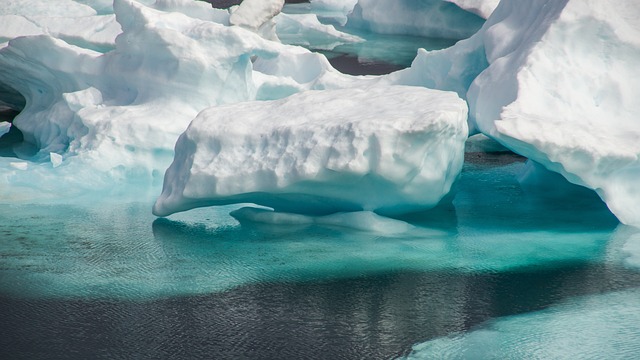Original article (in Serbian) was published on 21/1/2025; Author: Milica Ljubičić
The scientific community has been warning for decades about the melting of ice and snow and the rise in sea levels due to global warming. Others claim the opposite – that the surface area of Arctic sea ice is increasing and that climate change does not exist. Among them is the web portal Nulta tacka, which recently reported that the surface area of Arctic ice increased by 26 percent in September 2024 compared to September 2012. According to their interpretation, this data “destroys the myth of global warming”. However, experts from the National Snow and Ice Data Center warn that this comparison is misleading, as isolated data, comparing only two dates, does not provide a complete picture. Long-term observations and satellite images confirm the continuous decline of Arctic sea ice.
“New discoveries destroy the myth of ‘global warming’: Arctic ice 26 percent larger than in 2012!” recently reported the web portal Nulta tacka, known for denying climate change, as previously covered multiple times by Raskrikavanje.
This time, Nulta tacka based its claims about the increase in Arctic sea ice surface area on statements made by American geologist Tony Heller, a well-known climate change skeptic, as highlighted by numerous international fact-checking organizations.
Heller shared this claim along with images sourced from the National Snow and Ice Data Center (NSIDC), which continuously monitors and records data on Arctic sea ice. The images show that the ice surface area on September 7, 2024, was larger than on September 16, 2012.
By comparing these two dates, Heller concluded on his profile on platform X that the surface area of Arctic sea ice had increased, implying that global warming does not exist, despite warnings from the scientific community that have emphasized the dangers of climate change for years.
However, the Colorado-based NSIDC points out that such comparisons represent cherry-picking, as they rely on isolated dates.
The NSIDC press team explained to Raskrikavanje that on September 17, 2012, the minimum surface area of Arctic sea ice was 3.39 million square kilometers, while on September 11, 2024, it was 4.28 million. Although the difference is evident, isolated data does not provide a complete picture. Long-term observations indicate a significant declining trend in Arctic sea ice from 1979 to the present.
“While there are year-to-year variations in ice levels, satellite records over the past 18 years have documented the smallest surface areas of Arctic sea ice”, the NSIDC stated to Raskrikavanje.
In an article they referred to, it was explained that there are occasional periods when the Arctic sea ice on a given date in a recent year may exceed that of the same date in a previous year. However, using isolated data ignores the long-term trend, which clearly shows a decrease in Arctic sea ice.
The graph shows the surface area of Arctic sea ice each September from 1979 to the present, based on satellite data.
The NSIDC notes that weather conditions also influence the “behaviour” of sea ice over daily, monthly, and yearly time frames. “Sea ice extent varies due to sunlight, ocean and air temperatures, winds, and storms. These factors will occasionally cause the extent of sea ice to be above or below the range observed on the same day in previous years”.
However, long-term observations of Arctic sea ice surface area indicate a consistent decline, as clearly seen in the graph above. There are ups and downs, but decade-long records show that the amount of ice is decreasing.
Additionally, climate change deniers often overlook a critical aspect, which is the thickness of the ice.
In an article, the NSIDC highlights that younger, thinner ice formed during winter melts more quickly and provides a weaker habitat for Arctic animals such as polar bears, which now must travel long distances in search of food.
Walt Meier, a scientist at the National Snow and Ice Data Center, explained to Reuters that Arctic sea ice typically reaches its peak extent in March and its minimum in September. He noted that long-term changes in Arctic sea ice are best observed by tracking the minimum ice extent each year, which shows a clear declining trend.
For example, the average minimum ice extent from 1979 to 1990 was 6.95 million square kilometers. It dropped to 6.50 million square kilometers during the 1991 – 2000 period. The decline continued into the next decade, with the average minimum falling to 5.39 million square kilometers, and during the 2011 – 2020 period, the average was 4.42 million square kilometers.
A sea ice modelling expert from Newcastle University told Reuters that there is no evidence or reason to believe that the declining trend in Arctic sea ice extent is nearing an end.



